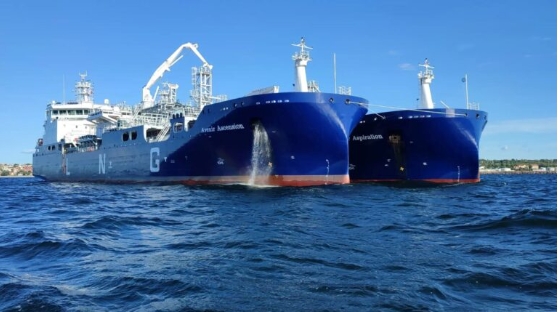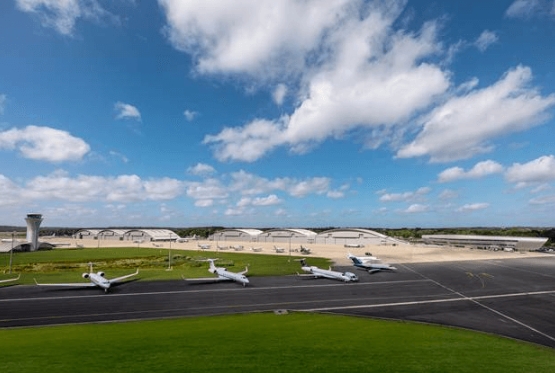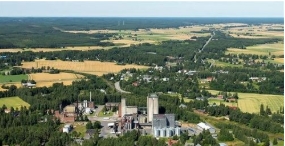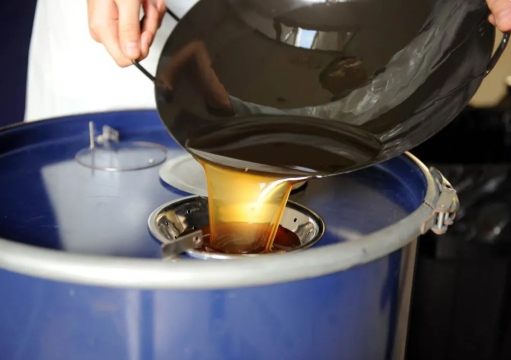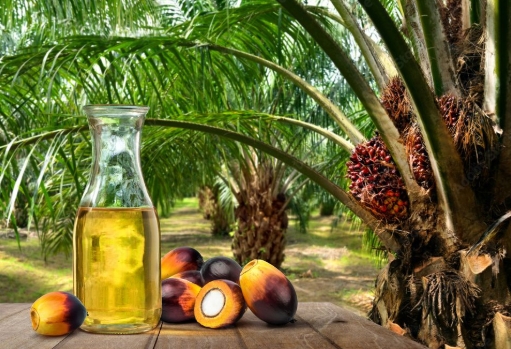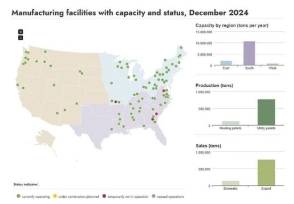A renewable energy system that uses deep ocean water to generate power is scheduled to move from 45 years of experimentation to seeing the world's two largest ocean thermal facilities installed in islands in the Pacific and Caribbean next year.
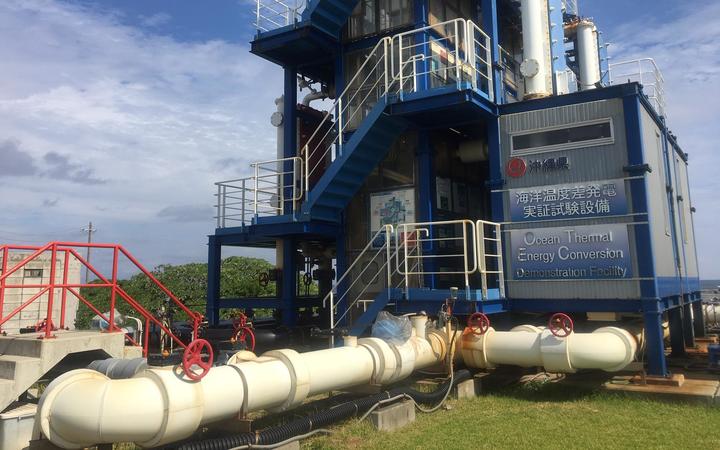 The 100-kilowatt Ocean Thermal Energy Conversion (OTEC) plant in Kumejima, Okinawa is one of several experimental facilities globally. S. Korean and Dutch initiatives are moving OTEC from experimental technology to commercial application levels. Photo: Giff Johnson
The 100-kilowatt Ocean Thermal Energy Conversion (OTEC) plant in Kumejima, Okinawa is one of several experimental facilities globally. S. Korean and Dutch initiatives are moving OTEC from experimental technology to commercial application levels. Photo: Giff Johnson
Ocean Thermal Energy Conversion (OTEC), long promoted as a viable clean energy source but one that has remained obscure in the demonstration stage for decades, is getting a boost from South Korean and Dutch initiatives, providing a "sense of momentum" to the OTEC industry, said Benjamin Martin, who works for the Global Ocean reSource and Energy Association Institute, which operates a 100 kilowatt OTEC plant in Kumejima, Okinawa.
Over the past 10 years, the Marshall Islands promoted OTEC power as an energy option for the country with the hope of developing a large-scale commercial OTEC plant to provide power to the US Army's missile testing base at Kwajalein.
While the Marshall Islands plan never came to fruition, a South Korean initiative will see the first OTEC plant for the Pacific Islands installed in Tarawa, the capital of Kiribati next year. A second, larger OTEC plant will be placed on an island in the Caribbean.
The use of ocean thermal energy conversion was first popularised by best-selling author Jules Verne in his 1870 book, Twenty Thousand Leagues Under the Sea.
The Kiribati and Caribbean developments herald a significant expansion of OTEC use after many decades of small, experimental plants in operation in various countries.
Though still small by power plant standards, the new OTEC plants for the Pacific and Caribbean will be 10 to 30 times bigger than experimental plants, such as the facility in Okinawa, currently in operation.
Ocean Thermal Energy Conversion is a clean, renewable energy source that uses deep ocean water to generate power from the difference in the temperature of the surface water and the deep water in the ocean.
Aside from power generation, the deep ocean water pumped up by an OTEC plant is clean and nutrient-filled - and is being used to support business development in various countries.
Surrounding the 100 kilowatt OTEC plant in Kumejima, Okinawa, for example, are a range of businesses that make use of the deep ocean water for their products: cosmetics, seaweed, oysters and other aquaculture products.
The South Korean government is funding a one megawatt OTEC plant that has been developed by the Korea Research Institute of Ships and Ocean Engineering (KRISO), which will deliver it to Kiribati in 2020.
Following nearly four years of designing and developing a one-megawatt (MW) plant, KRISO performed a short-term demonstration of the OTEC plant in the East Sea of Korea this past October.
The OTEC plant was located on a barge for the demonstration. The demonstration proved successful paving the way for installation in Kiribati, according to KRISO officials.
"We can easily say that this successful test has moved OTEC demonstration and development forward and has very likely broken the record for gross power output at the open-cycle test facility at the Natural Energy Laboratory of Hawaii," said Mr Martin.
KRISO now "plans to transport the one-megawatt plant to Kiribati where we will install it in 2020 and operate an on-land type plant for the long-term after 2021," said Dr Ho-Saeng Lee, the principal researcher for the Seawater Energy Plant Research Center at KRISO.
"After transportation is completed, the plant will be installed on land at a coastal area of South Tarawa in Kiribati," Dr Lee said.
KRISO is hopeful that operation of the plant in Kiribati beginning from 2021 will generate the basis for expansion of OTEC energy use to other islands in the Pacific.
"Based on its long-term demonstration in Kiribati, the research will continue to be carried out to enhance the efficiency and support for spreading the system to the South Pacific Islands and secure commercial OTEC design technology," Dr Lee said.
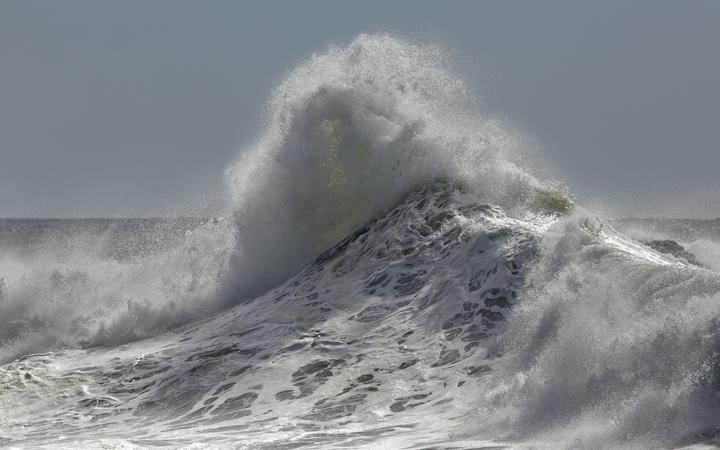
In a separate development, Allseas Engineering, a Netherlands company, is aiming to locate a three-megawatt OTEC facility in the Caribbean.
"Currently Allseas is developing the world's first multi-megawatt OTEC plant for Bonaire, one of the Dutch Caribbean islands," said Berend Jan Kleute, a senior research and development engineer with Allseas Engineering.
"Allseas is committed to maintaining a clean and healthy environment by identifying and developing sustainable solutions to protect the oceans and marine life."
Mr Kleute said Allseas would use its "deep-water expertise to accelerate implementation of OTEC technology for renewable energy projects".
Allseas, as a private sector company, had an advantage over most other OTEC projects globally that depended on government subsidies for expansion, he said.
KRISO's development and successful testing of its new one-megawatt plant and other developments globally highlighted "advancements in projects around the world and feed a sense of momentum".
"With a historic achievement this year (by KRISO, with its successful test of a one-megawatt plant), we look forward to the bright opportunities OTEC provides to meet future needs in energy, water, and food."
